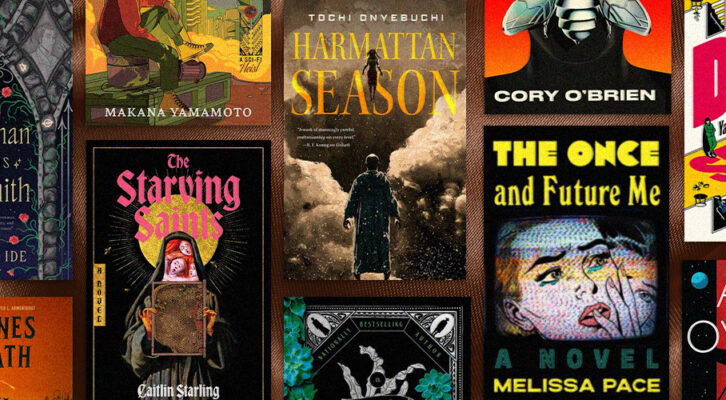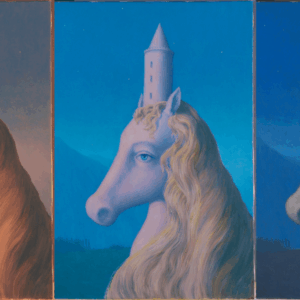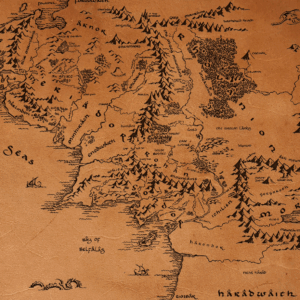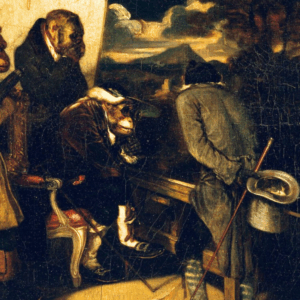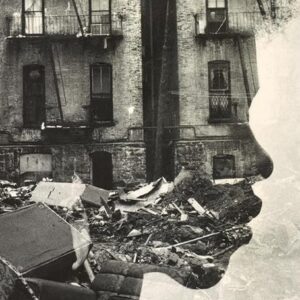
On Hybrid Writing: Finding the Right Container for the Story You Need to Tell
Matthew Clark Davison and Alice LaPlante Embrace the Importance of Genre Fluidity
This is part five of a five-part series on the craft of writing by Matthew Clark Davison and Alice LaPlante.
Some writers realize their projects with the use of a single genre’s craft (its strategies and techniques) to transform these little arranged symbols on a page (words) into art that resonates with readers. Other projects demand a mash-up of genres to heighten rhythm, deepen thematic concerns, or reflect a character’s obsessions in a way that a strict adherence to one genre can’t.
Most kids have no idea why they eat some foods in the morning and others at night. They’re hungry. They eat what’s provided. Japan’s savory, nutrient-dense breakfasts of fish and pickled vegetables may seem odd to people in countries like Italy, where breakfast is a cappuccino and a croissant. Japan’s breakfast evolved to sustain the long days of labor. Italy’s bread- and sugar-heavy tradition developed during the industrial era. Take a kid to a place where different customs are practiced and they might immediately think of the differences, but the logic informing the development of the custom is often the same.
Like meals, the evolution of literary genres often arises from social circumstances. The more one learns about the politics and prevalent mores of the time and place, the more the strategies (or rules) around genres make sense within that context. Same with food, the more one learns about what grows or provides sustenance in a specific place because of climate and the proximity to water—the more we see how necessity plays a part.
Take the idea of breakfast for dinner. For years, when Matthew’s father was around, customs had to be observed. Before his parents broke up, breakfast usually meant cereal; so traditional eggs, pancakes, and sausage—even in the morning—signaled a special occasion like Mother’s Day or Easter. Things were more relaxed in the morning on holidays, before drinking started, when his dad was off from his stressful job.
For years, Matthew had no clue as to why he loved pancakes more at night. “Is it because it’s a touch rebellious?” his husband recently asked him. Perhaps a bit, Matthew thought, but not if you scratch beneath the surface. Do a web search on “breakfast for dinner” and you’ll see Matthew is far from its only enthusiast.
So why? The practical reason: only after his dad left, when his mom became single, and had less time and money to shop and prepare did she start cracking eggs and buttering toast for dinner. The emotional reason it became a favorite eventually became tethered to something deeper than practicality: with dad gone, there was also an absence of tension, more bonding, an association of celebrations.
This same thing is true when inventing new or combining genres in writing. There’s a practical and emotional reason. Writers like Woolf, Joyce, and Ellison moved from omniscient authority to fragmented or first-person narration, challenging the morality tales that were expressed after enduring the western Victorian era. Writers of the Latin American boom—such as Mario Vargas Llosa and Julio Cortázar—retained elements of omniscient narration but bent it toward the surreal, the polyphonic, and the politically subversive, using layered, nonlinear structures to reflect histories marked by dictatorship and colonial legacies. If you’re unaware of the pressures that caused the genres to evolve, or you’re encountering them after solidifying an idea of what a certain form “is,” these variations may seem odd. But when they work, they illuminate their contents in ways that ring truer than conventional forms.
When an obsession comes that wants words to be art, you choose (or invent) whatever container will best display it.
In The Lab, we share excerpts from Jacqueline Doyle’s project The Lunatics’ Ball, which is the title of her book-in progress, a hybrid memoiristic text that focuses on women who lived in psychiatric hospitals. Parts of the project also illuminate the history of psychiatric hospitals—formerly called “lunatic asylums”—in ways a publisher might categorize as “historical nonfiction.”
When her own and her family’s history with mental illness needed space on the page, she added sentences constructed with strategies typically used in memoir. Soon, however, the project moved fluidly to include what the writer dreamt, personas she invented, and even included bits influenced by her characters’ (reported or author-imagined) interest in music, syntax, and lyricism. Doyle said, “It was a challenge…to write about the silenced, the hidden, the lost, and bring them alive on the page…” Her obsessions didn’t fit into any one narrative category, so she combined strategies from multiple genres and shaped them into something new.
One of Alice’s favorite books is Michael Ondaatje’s memoir, Running in the Family. It combines essays with traditional poetry, prose poems, and what Alice personally calls “tone poems” after the musical form most prominently used by the composer Richard Strauss (such as with“Also Spake Zarathustra,” the theme to 2001: A Space Odyssey). A tone poem is orchestral music that tells a story or conveys an idea, but in an infinitely more flexible and fluid way than traditional symphonic forms allow. Likewise, the prose-based tone poems in Ondaatje’s book add tremendous depth that is primarily—although you don’t realize it until the very end—a bittersweet tribute to his father.
Alice’s time playing violin in orchestras, Ondaatje’s memoir, and the idea of a tone poem combined and became forms of inspiration for the point of view of her latest novel-in-progress, in which six sisters share a narrative voice (“we”). Although everyone in each section must play as one—in unison—the reality is that every violinist has their own style and tone and other idiosyncrasies that (subtly) set them apart. Surprisingly to some, this enriches rather than detracts from the overall sound.
In our forthcoming book from W.W. Norton The Lab, we also look for inspiration in Justin Torres’s We the Animals, which opens with an incantation that feels like a prose poem: rhythmic, elemental, urgent. The repetition of “We wanted more” builds like a chant. The novel doesn’t obey one form—it gathers its energy from several.
We read Stewart Shaw’s poem “daddy sings us goodbyes,” which uses the opposite ratio: a poem, yes, but borrowing techniques from story—interiority, arc, change. It doesn’t feel like a poem trying to be a narrative. It feels like an expression of something pure, powerful, and affecting. The speaker’s joys and laments about his father are transferred powerfully from the page to being felt in the body of the reader.
None of these works feel accidental or sloppy. They may seem, like jazz, improvisational—but the effect is born of intention. Most often, we find that the writer used strategies from more than one genre for only one reason: “I needed to…” To earn, then convey, a piece’s emotional and intellectual force.
As Terese Svoboda, author of twenty books (in multiple genres), puts it, “My allegiance is to…whatever vessel it needs.” We read that as meaning that when an obsession comes that wants words to be art, you choose (or invent) whatever container will best display it. That clarity—along with knowledge of what each form can do—makes the difference between a hybrid that feels earned and one that feels uncertain.
Because writing hybridity for the sake of hybridity isn’t the goal. Some of our students think of hybridity as “alternative”—for example, what our generation called punk rock—and therefore, since it resists the mainstream, assume it’s inherently better. We disagree. Inventing a new form or employing a lesser-known hybrid form to contain your vision isn’t better or worse than sticking to the most tried-and-true customs of one form, not if that’s the vessel it needs.
Cathy Park Hong’s book of poetic essays, Minor Feelings, took their current form only after she attempted to fit her passion into more well-known genres: satire, poetry, even stand-up comedy. Her obsessions didn’t change. The form did—because the original containers didn’t serve what the work needed to become.
What connects all of this isn’t resistance to genre. It’s loyalty to what’s urgent. We cross forms not to break rules, but because the material won’t come alive any other way. Hybrid writing, when it works, is the opposite of casual. It’s what happens when the writer follows a line of inquiry past the known forms into something more precise.
Like breakfast for dinner, hybrid writing challenges expectations—not for rebellion’s sake, but because it’s practical, and something deeper, stranger, or truer demands it from your material.
__________________________________

The Lab, by Matthew Clark Davison and Alice LaPlante, is available from WW Norton for pre-order.
Matthew Clark Davison and Alice LaPlante
Matthew Clark Davison is the author of the novel Doubting Thomas and founder of The Lab, a generative writing workshop. He is emeritus faculty in creative writing at San Francisco State University, and lives in Oakland, California with his husband. He can be reached at through his website at www.matthewclarkdavison.com.
Alice LaPlante is the author of the craft books The Making of a Story and Write Yourself Out of a Corner, and the New York Times bestselling novel Turn of Mind, as well as three other critically acclaimed works of fiction. She has taught creative writing at Stanford and San Francisco State University and now lives in Mallorca, Spain, with her family. She welcomes emails from other writers as well as readers at alice.laplante@gmail.com.











